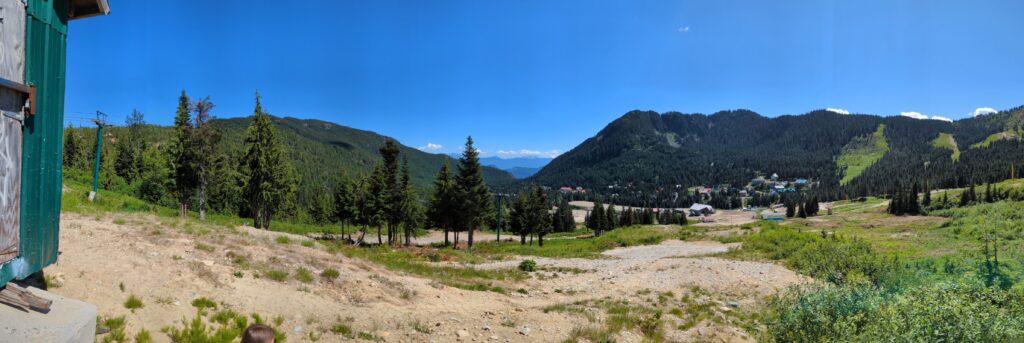Owning a home and living in Hemlock Valley is pretty great. It provides homeowners and visitors up the hill with breathtaking natural beauty and a close-knit, welcoming community. However, the village’s limited drinking water capacity, coupled with increasingly long and dry summers, has led to water restrictions and the imperative need for conservation efforts.
Hemlock Valley continues to grow, with the number of new homes increasing every year. Hot tubs seem to be a must-have option and it’s really no surprise. They are luxurious additions that enhance relaxation and enjoyment. They also help hosts attract short-term rental guests better than hosts without one. But filling and maintaining hot tubs also puts an added strain on Hemlock Valley Utilities’ limited drinking water capacity in an already water-stressed environment.
Everyone that has been in Hemlock Valley for a few years (or anywhere not under a rock) has experienced the increasingly long and dry summers (heat dome, anyone?), which directly impacts the water level in our local holding pond. The reduced rainfall and prolonged heat causes the water level to drop faster than it can naturally replenish, leading to concerns about water availability for the community’s essential needs. The combination of population growth, pool and hot tub usage, and prolonged dry spells makes it crucial for homeowners to take heart and conserve water conscientiously.
There’s been a water flow disruption to our holding pond!
Now, to throw an unexpected monkey wrench into all our water-management efforts this summer, Hemlock Valley Utilities is reporting a possible man-made dam that, unknowingly to the Utility’s staff, had been hindering water flow into the already stressed holding pond. The Utility is not sure how long it’s been there, or who/what put it there. Some of the wood used in the blockage was clearly cut with a saw, not a beaver’s buck teeth. Regardless, employees are having a hard time accepting that anyone would actively work to sabotage Hemlock Valley’s summer water supply.
Employees have cleared the blockage and water is flowing freely again to the holding pond. Not surprisingly, the water level has fallen exceptionally low as a result. With the dry weather continuing and community demand uncertain, it is difficult to know when the water level in the holding pond will return closer to normal.
Hemlock Valley Utilities is reporting the groundwater spring at the top of the mountain is still feeding the pond, and they are hoping for rain soon. The Utility is also continuing behind the scenes to complete the permitting process and drill additional wells as soon as possible.
Please, regardless of your opinion of Hemlock Valley Utilities, be mindful of your daily water usage: small changes in your routines while on the hill can make a significant difference. Simple actions like turning off the faucet while brushing teeth, using efficient showerheads, and fixing any leaks promptly can save gallons of water each day.
Utilize water-saving appliances and toilets: When it is time to replace them, like dishwashers and washing machines, opt for water-saving models. These appliances use less water per cycle, reducing your overall consumption and minimizing strain on the water supply.
Landscaping practices: For some of us, Hemlock Valley’s natural beauty extends into our yards. However, maintaining lush gardens and even a lawn on the mountain can use a lot of water. Consider xeriscaping (the practice of designing landscapes to reduce or eliminate the need for irrigation) by planting native, drought-resistant flora that require less irrigation.
Shut off water to vacant homes: If you are leaving your home unoccupied for an extended period, shut off the water supply at the main valve. This simple action prevents potential leaks or burst pipes, and conserves water. Having a smart water meter professionally installed in your home can earn you a discount with your insurance provider.
Preserving Hemlock Valley’s water resources is crucial for maintaining the balance between a thriving community and the natural environment. With existing water restrictions, the discovery of an unexpected hindrance to the water flow, and the strain placed by a welcoming, growing community, homeowners must now take proactive steps toward better water conservation.
By adopting simple yet impactful measures like being mindful of daily water usage, installing water-efficient fixtures, and shutting off water to vacant homes, we can collectively do our part for a sustainable water future in our shared alpine haven.




